Viewed 5044 times | words: 5978
Published on 2020-10-30 20:30:00 | words: 5978

This article is within the "citizen audit" series, as it is a preliminary discussion of potential issues that, if current patterns are maintained, could have long-term impacts.
I let one month pass since the previous post- few thousand more readers scattered across few hundred articles.
Before, as usual, "unbundling the title", to discuss each of its components, I deem appropriate to first share my initial assumptions, partially shared this week on Linkedin, and partially already within a publishing project started in 2015.
The assumptions of resilience
If you have a look at the datasets that I published on my Kaggle profile, you can see that they all converge on two themes.
Business and sustainability.
The rationale was to create compounded data sources by selecting from public and shareable data sources, i.e. first selecting, then collating.
As I shared online in a discussion point, this is my logic:
1. should be foreseen a routine update by the source (in this case, yearly), if needed
2. are considered non-partisan (i.e. do not represent a specific agenda, and therefore could be more acceptable as components to indicators, by both political activists and business advocates)
3. each indicator should be provided by a "domain expert source" and then collated by an acknowledged "super-partes" (again, to improve credibility and perception as non-biased)
4. last but not least: each indicator should be useful, alone or with others, to help set an agenda for action (e.g. I used the indicators on access to Internet, workforce inclusion, urbanization, etc)
The last point is, frankly, the most relevant: my approach to "data" about business and society started really with my activities in the early 1980s (I was 17 when I started) within a European Federalist advocacy group, by digging into documents that routinely we received from Brussels and Strasbourg.
In business, this just expanded: numbers aren't just numbers, are mirrors of organizational behavior, and each alteration of numbers has impacts- might be internal, on customers, or other stakeholders not considered customers ("externalities" in polite parlance).
So, if you are used to work with finite resources (as I worked both in manufacturing and banking since the beginning), you have to plan accordingly- or find ways to expand either your sources or resources (moving from zero-sum to non-zero-sum).
Nonetheless, the degrees of freedom in altering your resources aren't neutral within any ecosystem, there is differential access (i.e. different parties have higher or lesser degrees of access, flexibility, and even knowledge about the availability of resources).
Within a single company, this is sometimes represented by discussions that start with "our priorities are", e.g. in a manufacturing company there is a difference if the lead is perceived to be from the product design, manufacturing, or distribution side.
It is just a reality of life- despite all the "new age-ish" overtones of many proponents of management paradigms since the 1990s, it is still a matter of balance and distribution of power- only, sometimes, there is an acceleration on its evolutions.
Now, as any human reality, the status quo ante of the balance of power is represented as "cast in stone" by the incumbents, as a logical consequence, but this isn't the case.
Actually, often the presented balance of power isn't the one used operationally, i.e. the "informal" balance (and distribution) of power.
Consider the brouhaha few years ago when Artificial Intelligence thrashed the leading Go/Weiqi/Baduk players, AlphaGo (see the movie here, if you want).
This is a Go (in China Weiqi, in Korea Baduk) board (from the Wikipedia page):

In Go you win by territory, capturing the opponents' stones isn't so critical.
Still, humans are inclined to have more- more territory (if you know how to do it), or more captures (mainly if you are a rookie, as I am, or coming from other games).
In my case, the interest about Go is represented by the number of books and documents I read about it or analyzing games- I never played against humans, and the closer I got to playing was in November 2012, while in Berlin, when I attended a workshop where we were given problems to solve, and then told solutions (I fared better than I expected, when I tallied the number of solutions where I arrived at the same result proposed from the podium).
So, beside playing against computers, and seeing that I am still too much inclined to "capture", as if I were in other games, I like to look at shapes within the territory, and that there isn't necessarily a single "front"- action can develop across the board.
AlphaGo went through a different path: winning is winning also if you have just one point of territory (out of 361) of difference, so it was "free" to play moves that every book on Go considers "weak"- disconcerting human opponents.
Human adaptability: after claims of demise of human intelligence etc...
...a leading player actually started playing against other humans "in a not human way"- and winning (see a game review from Korea here).
Actually, he was told to have achieved the level of game presented by the first Generation of AlphaGo, but it was still funny to see a human assessed not anymore on how other humans played since forever, but how a software that didn't exist a decade ago played.
So, we can adapt.
My interest and experience in numbers in business (planning, operations, control) delivered a lot of interesting cases on adaptability, but, in the end, moving past the "zero-sum" involved accepting a different risk balance.
Or: yes, you can create a new market- but that involves yours or somebody else's investments, and this in turn implies some risks.
Past disasters like Chernobil, the tsunami over a decade ago, Fukushima, and now COVID-19, showed how interconnected we are, but also how little we are interoperable.
Or: yes, local events can have a global impact, but we still have no balancing global response system.
Even within the EU, we are still struggling to build up a shared response system (but I will show later recent announced acknowledging this chink in our "Fortress Europe" armor, and how we are trying to overcome).
A recent (2020-10-27) workshop from the National Academies, released today on YouTube, compares various Social Vulnerability Indicators, and could give some ideas on which other elements/KPIs could be added to move from descriptive, to explanatory, to predictive models (i.e. to a mere observation, to something useful to help decision-makers).
The workshop title was about COVID-19 and vulnerability, but the latter is underlying any analysis of the former and its impacts.
What is clearly visible, is that COVID-19 exposed not just what I wrote above (global impacts due to interconnectedness not balanced by globally integrated response systems), but also how our current social and economic structure increased the vulnerability of the weakest strata of our societies.
The datasets that I shared online are actually heading toward an extension beside the confines of a company of an integration between economic and non-economic impacts and resilience.
Example: an initiative that increases the dependency from foreign sources of energy, while also lowering the inclusion of women and minorities or less qualified people within the workforce, would weaken resilience, as any impacts would disproportionately expose the lack of sources of economic independence for them (as was shown e.g. in areas of Italy were "informal" economy has a large chunk of the "bread winning" role), no matter how "innovative" might such an initiative appear under ordinary conditions.
I started in 2019 by publishing a dataset derived from the recently released speeches dataset from the European Central Bank, adding weekly updates each Sunday (next one of course in two days), and then adding a subset of the UN SDG status within the EU, plus a subset of 33 indicators (for business and society) from the Worldbank.
Added then in 2020 also a couple of datasets about Italy (including one on the culture industry), but the main focus is really about integrated, systemic sustainability.
In businesses, we moved from Corporate Social Responsibility to Sustainability Reports- both as an add-on to "ordinary" business.
Then, as I shared in the past in other articles, this evolved into integrating social businesses into ordinary supply chains (so, "social" as in the purpose of the business, not in providing a shield from competition), as well as the idea that the times are ready to deliver financial reporting that isn't just financial.
As usual, my perspective is that, if you think systemically, business isn't just business- also business has, in the end "socio-political impacts", but, as I wrote again in the past, this is an old story.
In geopolitics was at least since the early XX century theorized, but also the first "corporations" were actually heading into that direction, centuries before that: if not outright political, a "policy influencing" role.
Just this week, the President of the EU Commission talked about minimum wage:
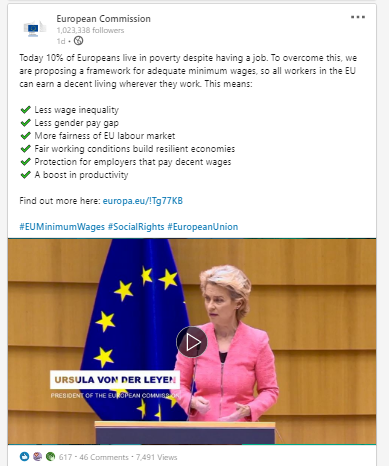
Building resilience (one of the aims of the various measures since early 2020) without systemic sustainability isn't going to work.
And systemic sustainability implies covering an issue that was part of many workshops I attended over a decade ago while living in Brussels: e-inclusion (more generally, social inclusion).
In the above mentioned workshop on 2020-10-27, was presented by RAND a decision support tool to help decising when to modify the social distancing measures, to modulate impacts.
The overall rationale:
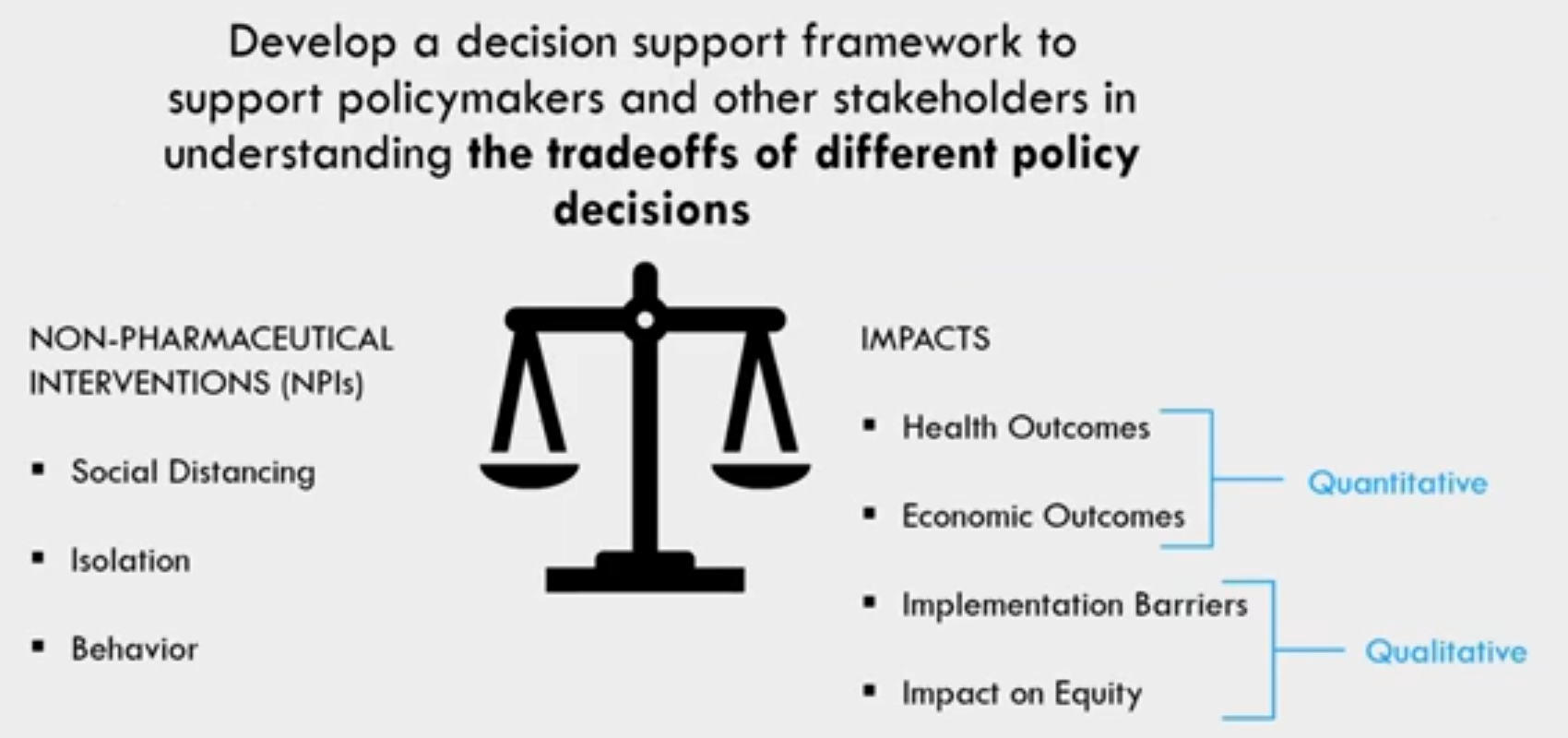
And the model structure:
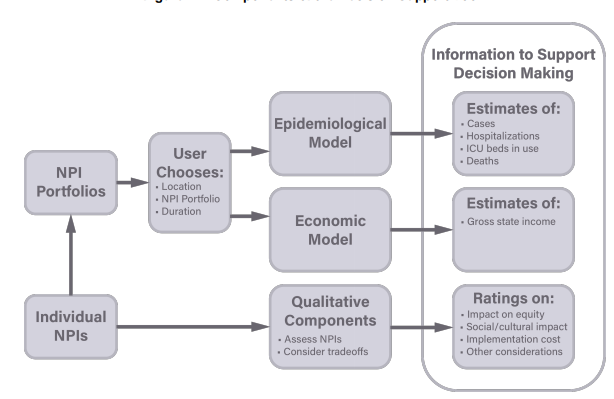
The report/ebook discussing the model has the title "The Health and Economic Impacts of Nonpharmaceutical Interventions to Address COVID-19 - A Decision Support Tool for State and Local Policymakers", and you can see a short video presenting the concept (also linking to a paper on "the details on the estimation of the economic costs of social distancing policies") at the tool access page.
A different tool, focused more on the medical side and preventing spread of the disease, was released months ago by Johns Hopkins Bloomberg School of Public Health, the "Contact Tracing Evaluation and Strategic Support Application (ConTESSA), and it was used as part of a Coursera certification sponsored by Bloomberg.
It is, overall, a matter of planning- with finite resources.
The curious part: beside seeing it in a small company my parents had since when I was a kid as young as 4 (late 1960s; no employees, but still they had to consider the availability of material to be used to deliver products, as well as the usual pipeline of suppliers, banks, etc) and until the early 1970s, my logistics planning experience actually started well before I started working, mainly through the political advocacy I wrote about above.
Once in a while there were transfers also abroad by bus (that was what the budget allowed), and this implied being involved into the logistical planning for buses, getting passengers, and, for local events, permissions and location selection based upon the expected attendance (better to overflow a small square than go for braggadocio and end up with a large square that the same people make seem empty).
And all that then enabled to quickly and with next to zero knowledge transfer (apparently, a routine in my working life), get up to speed with logistics for field exercises, as well as the daily juggling with scarce resources to plan routine activities.
Scarce resources, as we contributed to our own services in the barracks, plus those for the helicopter group, but my group in artillery was a specialist group giving support to others.
So, sometimes we had multiple teams scattered around Italy, and just a skeleton force in the barracks in Vercelli, but our barracks and services did not proportionately shrink when people were on training fields.
Business added to all that only the economic side, i.e. when planning with a controller or marketing director or others, resources are finite, and carry price tags as well as the need to justify the business case (albeit some then said that opportunities were infinite).
In our times, even in countries used to structured planning, a bit of the discipline has been lost during this COVID-19 rolling crisis.
I will let you imagine what happened in a country where, frankly, planning is a political and communication act, often with the operational side playing second fiddle.
As I kept discussing recently with friends and contacts, in Italy we alternate between planning with infinite resources, and creating multiple "contingency plans", to then pick up the one that gets the least resistance from decision-makers (or to switch and adjust if such a resistance develops, or if a preference is expressed by decision-makers).
Implementation? It is as in an old joke that I was told in the 1980s while working on a banking project.
Do you know about the planned (since well before I was born) bridge on the Messina Straits?
The joke goes this way: a consulting company is called in to deliver a feasibility study.
After much deliberation, they present the results: yes, it is feasible.
Questions from the audience: but what is the solution proposed?
Answer: look at page 49, section 2, paragraph 3.
Question from the audience: but it says that we should drain the Straits! How can that be done?!?
Answer: it is a mere technical detail.
A "mere technical detail"- as in many plans I saw in Italy, reminds really of one of my favorite war movies (along with "Gettysburg" and "Black Hawk Down"), "A Bridge Too Far".
And this brings about the discussion on the title.
Next Generation EU / Recovery Plan and its perception in Italy
After the long introduction to share pointers to material to enable also different perpectives in analysis, what are the implications for Italy?
As I shared on my profiles on Facebook and Linkedin over the last few weeks since the previous article, in Italy the 209bln EUR from the "Recovery Plan" are taken for granted, a "manifest" destiny (pun intended, as many requests for funding sound more like a "cash shipping manifest" than something that can be prioritized).
Since it was announced, the creation of the proposals for the allocation of those 209bln has been a story worth a book in and by itself.
I will restrain my audit instincts, and I will just share the document as released to the Italian Parliament by the Government on 2020-09-15, one month before it was to be delivered to Brussels.
Yes, one month before: Italy is formally a democracy where the Parliament has the power, but over the last couple of decades frankly there has been a trend toward a different direction.
Or: a trend toward rubberstamping what was decided in backrooms or pushed through by the government with limited discussion.
On the same issue, other countries instead started across their society a shared discussion as soon as Brussels announced the 750bln EUR initiative (or even when it was just a proposed initiative).
The PDF document is here: as I said to friends who by business have to review or produce documents for "business cases" (i.e. requests for funding, or approval, or both- of initiatives), the structure and argumentation tells a lot.
At times, the document delivers a "cut-and-paste" feeling (akin to when university students copy and paste whole sections of somebody else's work without quoting the source, to "pad" their thesis): but this is what we have now, so we have to use that as a starting discussion point.
In business, similar documents (that show potential but hint at structural weaknesses in analysis) are sufficient cause to post to the team somebody to help structure and deliver an improved version, as well as maybe eventually affecting the implementation phase.
From vetoing on one extreme, to milder measures such as a dedicated oversight/advisory team (to also "coach-on-the-job"), to outright flipping of the roles, i.e. turning the proponents into members of somebody else's team to deliver what they suggested, it is a routine that I saw more than once, in my experience in business in Italy since the late 1980s.
Well, in politics the feasibility most of those options is questionable, so the risk is a procrastination or "salami slicing" to create smaller and more easy to control steps, each one associated to a specific benchmark to enable a further step.
Which, in turn, would require redesigning the actual implementation initiatives proposals: if you designed something to be a "binary choice" (yes/no), and then turns into a "gated/phased approach" to ensure progression and avoid tossing further money into a sinkhole, a plan done for the former doesn't necessarily work for the latter.
As I shared one week ago within a Facebook status update: as President Eisenhower said: "I tell this story to illustrate the truth of the statement I heard long ago in the Army: Plans are worthless, but planning is everything. There is a very great distinction because when you are planning for an emergency you must start with this one thing: the very definition of 'emergency' is that it is unexpected, therefore it is not going to happen the way you are planning."
Hence, it might also be that, with a little bit more structure and method (to actually build that collection of understanding that derives from seriously planning different scenarios), actually the "traditional" Italian approach to "creativity in planning" I described above might be a useful tool right now.
Because we are in a "rolling emergency", where the crisis condition is compounded by its length in time, and the involvement of whole countries, not just professional crisis manager or emergency staff.
Even the most disciplined professionals do not necessarily behave in a proper way during a crisis, so imagine 500millions (thinking about Europe) of mostly ordinary citizens who were used to a more or less, rich or poor, but still "routine" life.
So, "plans with infinite resources" wouldn't really be a plan- more a list of priorities.
Actually, we already had a list of priorities: was attached to the proposal and charter for the 750bln, see a short article summarizing its distribution here).
Hence, you can see the document with the Italian proposals more as a list of points to "append" to each point within the original list of priorities.
Then, "planning" becomes preparing parallel scenarios with embedded capacity planning for each one, but "sliced" in segments, not binary "yes/no" plans.
Yes, we are moving toward "scrum/agile" in infrastructural projects as a need in a context that continuously re-arranges: build the common reference, and then "layer" step by step all the components that have been selected, but only if confirmed as still "go".
Of course, in some cases would still be needed a "yes/no" approach: to get back to the "bridge" example, you cannot just build half a bridge (albeit we had some cases of two sections of a bridge started from opposite side that failed to meet).
There is something that I routinely repeat to my Italian contacts whenever somebody talks about the 209bln "for Italy".
First, it isn't a "grant or loan" Halloween-style "trick or treat".
While the ESM (MES in Italy) money is more or less available, the Next Generation / Recovery Plan concept was in reality to mutualize new debt to be raised at the EU level on the markets, but then, of course, has to be payed back.
Again, a short article summarized the point: "In the proposed plan, the EU will borrow 750 billion EUR for the recovery fund on the financial markets, which would be repaid through future EU budgets."
No free lunch, here, despite what some in Italy still think- only, more favourable conditions, and a larger chunk of the pie than the one that we will have to eventually contribute to repay.
Second, the "distribution" that most in Italy celebrate, i.e. Italy turning, due to this crisis, into a Member State that receives more than what gives, was linked to specific conditions.
As an example: France is now in a worse shape than Italy, on the "infection rate" side, while the economic recovery in Italy during the last quarter was larger than expected, and larger than Germany's.
If we accept the concept that our planning and prioritization have to be flexible and adapt, we cannot then expect funding to be allocated according to a schedule cast in stone: the elements of the triad prioritization - funding - planning all have to evolve as situation demands.
As I wrote routinely, we cannot simply import in Italy approaches (including from Brussels) that have been tailored for countries where the percentage of larger companies is greater than in Italy, and where even smaller companies are part of multiple "digitally transformed" supply chains: we need to adapt before we adopt.
And adapting is actually bilateral: we need to adapt what we import in terms of "how-to", but also help our society and companies to grow up culturally.
On my projectmanagement.com profile, I currently focus on "cultural/organizational change and digital transformation, sustainability and leveraging open data (I call it "data democracy"- see robertolofaro.com/datademocracy)".
But if you look at the details of "project management experience", by phase, within the "end project" phase I stated: "First in late 1980s in support to a manager on a major roll-out for Andersen Consulting in Italy (banking), then as project manager, and also as a facilitator on programs and portfolios that needed to get back on track (e.g. crisis management and "recovery" projects, as well as negotiations)."
And, actually, on a much, much, much smaller scale, adopted a kind of "agile budgeting", e.g. negotiated with CIOs in Italy for a partner when I helped him to restructure, as on each customer there was both a set of "fixed" items on the priority list, as well crises or new "competitiveness-driven" initiatives.
By my background working on decision support models in the 1980s-1990s, I liked more to be able to monitor and report monthly progress and trends, and, if needed, negotiate a re-prioritization ahead of time, than work with supposedly infinite capacity- and then risk eventually to be told (as it happened to many, in Italy, North and South) "you know what? we do not have budget for that- thank for your work".
Yes, something that I always found infuriating in Italy since the 1980s was the routine of "rolling budgets", Italian style: i.e. you exceed the budget now, as you assume that then, anyway, next year you will have the same or more budget.
Shifting to examples on the national level: in Italy, Recovery or not, we still need to carry out routine maintenance activities, have security forces, and have ordinary non-COVID health services, just to name a few.
So, we need to consider that, as resources are finite (notably human resources that take 2 to 5 years or more to train), we need to think in short-, medium-, and long-term "buckets", also if the national approach to budgeting and planning routinely follows the "bandwagon effect".
Example: when there was long ago a special grant for any business that created an e-commerce to support its activity (50k EUR), many shops received offers to split the amount, and get a kind of off-the-shelf website, but with zilch support in actually creating something sustainable (e.g. training, introducing processes to update, shifting to transparent accounting are required by e-commerce laws, etc).
Net result? Many got the 50k EUR, but that did not affect so much the actual availability of e-commerce, just consumed resources.
Of course, that was almost two decades ago- so, some souveranist would state that I am anti-Italian and this has changed.
I beg to differ: if we had multiple rounds of "industry 4.0" laws isn't just because the laws weren't designed thinking systemically (e.g. forgot initially details such as training, interfacing "smart" machinery with ICT, and the like).
It was also because, if a company wanted anyway to replace old machinery, found expedient to follow the "industry 4.0" path, by buying machinery, having the technical check by using technical companies delivering the "yes, it works and it is compliant" to get significant tax benefits, exceeding those that would have otherwise received for more traditional equipment.
Only then to use the new machinery as they were using the old machinery- ignoring the "smart" part (from training, to data collection, and, of course, integration within the Information Systems).
In previous decrees dispensing since March 2020 first billions of EUR, and eventually an aggregate of over 100bln EUR, in Italy we moved from pork-barreling (a balance-of-power-stabilization effect embedded in national budgets everywhere) to "sprinkler money".
Or: countless of micro-allocations but without an overall prioritization, and, as I wrote within a review of a law converting one of the decrees, some of the measures actually mixed short-, medium-, long-term but allocating either zero or short-term resources (see the resulting webapp here).
So, despite all the discussion in March about a second wave to be expected, beside the opposition negationists, we also had not too long ago quixotic pronouncements of how brave and good we Italians have been, after the first chaotic phase, to bring everything under control.
I have articles from late January 2020 stating the same kind of "successful containment" of what, back then, was stated as being only related to Chinese or those who travelled to China.
Only to see now that the last six months weren't used to ready up our health system: we are again at involving the military to set up makeshift field hospitals outside hospitals, and invoking retirees and medical students that are close to the end of their studies.
The discussion in Italy is still really on "barricades": those for and those against the use of the ESM (in Italy called MES) allocation, stating grandly that we do not need it, and we need to focus just on the Recovery part (even misunderstanding what it is for, at times- as routinely I hear "tax cuts"), and others who invoke the use of the ESM funds for health just to force the various components of the current Government to quarrel on this issue.
Then, both the coalition supporting the Government, and the centre-right opposing coalition have their own "in-house" dynamics, and frankly sometimes seem to be asking for this or that only to reassess the balance of power within... their own side.
So, a leading politician from PD asks to reassess the distribution within the Government, while Forza Italia (Berlusconi's party) states that they are ready to jointly develop a budget with the Government but not to join the Government, and the two other parties of the centre-right coalition instead, being unable to keep up their numbers in the polls for much longer unless there is some action, routinely ask the Government to resign.
Frankly, considering that all these funds, ESM or Recovery, eventually imply "paying back", directly or indirectly, what matters more is the proper allocation of funds, their availability when and where needed, and an equally appropriate monitoring of their use.
Also, to dispel all that Machiavellian gaming and scheming, I should qualify: a timely proper allocation of funds.
As I posted this morning on Linkedin in English (and previously in Italy on Facebook), we still have to work on becoming an ordinary country:
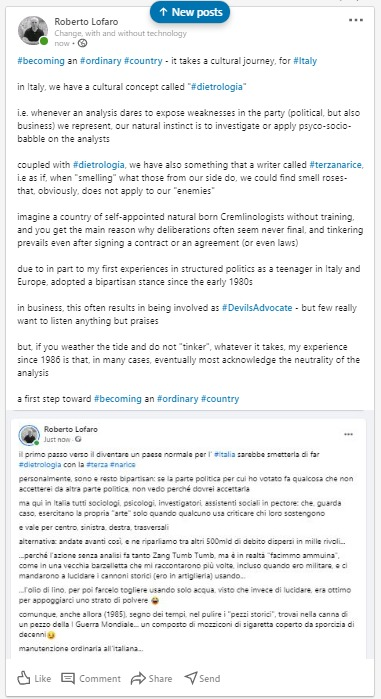
Italy lost few decades where it was wandering across time and diverging from our EU partners- as others (as this humble scribe and observer, albeit since the beginning of the crisis) wrote not too long ago: we need to consider this an opportunity, as all the countries, including all the largest EU Member States, are feeling the impacts of COVID-19, and rethinking "resilience".
As posted today by the European Commission:
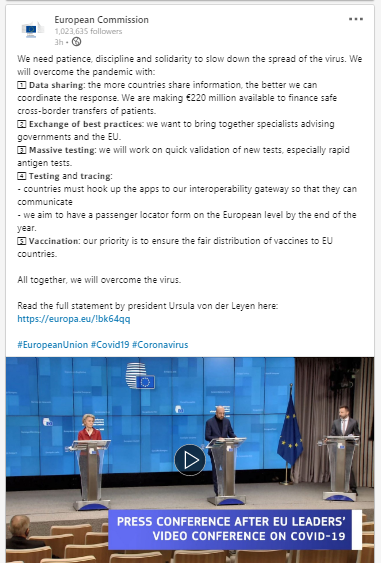
The virus has been proven to be here for a little bit longer than many expected (I did not- see what I posted on FB between January and April 2020).
Anyway, this doesn't imply that it should stay, through our lack of resolve, forever, or that we cannot develop a way to live with it, a "new normal" that will, at the same time, increase our resilience and fast forward our shift toward a different structure of the economy, while it still lingers on (or becomes part of our ecosystem).
I will write again about this last point, the "evolutionary" side of the COVID-19 crisis (e.g. automotive, banking, retail, State and local bureaucracies in Italy) in another article, but even just over the last two weeks I attended webinars and workshops around the world focused not just on how to cope with COVID-19, but how to "fix" what did not work, to be better, ready, and more operational the next time.
As I write often when I complain (after trying all the internal venues to solve it) about Italian State, local, and private bureaucracies: in a complex world, doing what Italians do, i.e. getting through tribal acquaintances what should be normal, isn't enough, because it might solve the immediate issue, but is a blatant distortion, and doesn't fix the process, i.e. isn't a "scalable" solution (one that can be applied to each and every other citizen).
Time is essential and scarce, if we want to solve the COVID-19 issue and fix the lack of resilience: we cannot keep using what I witnessed and documented since 2012, a habit to solve any bureaucratic SNAFU by sidelining, procrastination, and generally trying to make it fade away, or at least make it land into somebody else's lap.
An hilarious case happened recently, and I shared with the Italian Senate the long list of "forwards for competence" that ended up... with a return to the starting point.
Not what is needed now, but "the buck stops here" isn't really an innate attitude of Italian bureaucracies, private or public.
Unfortunately, this is the method that delivered to Italy an expansion of organized crime grip on the economy, as everything turns into an exception.
As I routinely share with others, I still have books from the early 1990s where the title stated with horror that organized crime in Italy had a 50,000bln Lira annual turnover.
Which seems a lot, but it is less than 25bln EUR.
Well, add inflation if you want, but it is still a far cry from the up to 11% of GDP that recent research reported, now including both direct proceeds from criminal activities, and their investment in "ordinary" activities, distorting the market: try competing with somebody who has relatively unlimited access to cash.
It is akin to play Monopoly with somebody that uses the money in the box to act as a player- you will never win.
And, as routinely reported recently on newspapers, and also in interviews with the Prefect that now is Minister of Interior (Home Secretary), this crisis is actually expanding the reach of organized crime on all those activities where it is easier to clean money, and it is not unusual to see that, despite the crisis and opening hours restrictions, there are renovations in shops, café, restaurants, shops that seem at least hazardous, if you consider that old historical presences instead are routinely reported as shutting down due to lack of business and a precarious future.
This post is just a preliminary sharing of some considerations on the Recovery Plan as seen from Italy, but now we have to wait for the answer from Brussels to the above linked document that, after its approval by the Parliament, was forwarded to the EU authorities.
A silver lining? As I wrote before and outlined now, this crisis actually made visible structural weaknesses both within the economy and society in Italy, e.g. how many areas still had plenty of "informal" workers, workers that during the lockdown from March to June were unable to work, and now are risking again to fade further into even more "informal" arrangements.
So, it was interesting tonight to hear both the President of the Italian Republic Mattarella, Minister of Interior Lamorgese, and Governor of the Bank of Italy Visco highlight the social exclusion risk and the need to build resilience starting from the weakest layers of society.
To close with a positive note, while waiting to post the next phase of the analysis on the Recovery Plan proposals from Italy, I would like to share an announce from the EU about a new app that is something more than just an app:
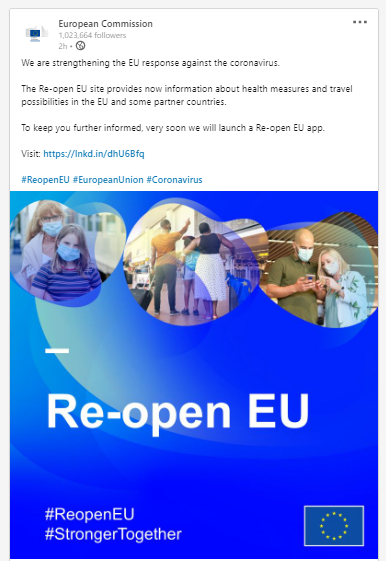
It is a statement: if we will have to, as I wrote months ago paraphrasing "Dr. Strangelove", to "learn to live with it", we will do it together, and together implies recovering the four freedoms in Europe.
Have a nice week-end.
 _
_